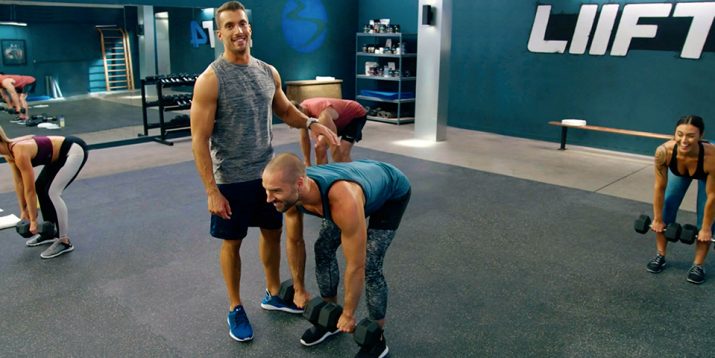How to Do the Dumbbell Deadlift for a Superior Posterior

Looking for a novel way to work your hamstrings, glutes, and lower back while burning a ton of calories at the same time? The dumbbell deadlift, a less-celebrated take on the much-vaunted barbell version, has your name on it.
The dumbbell deadlift can be just as effective as the barbell version, and, like the move’s flashier cousin, you can work up to lifting big weight when you do it correctly and build up gradually.
But you really have to nail your deadlift form. Here’s how to ensure it looks textbook perfect.
Dumbbell Deadlift: Step-by-Step Instructions
- Stand with your feet hip-width apart, holding a pair of heavy dumbbells in front of your thighs, palms facing you.
- Keeping your back flat, shoulders back, and core engaged, push your hips back and simultaneously hinge forward at your waist as you bend at your knees (imagine closing a car door with your butt).
- Lower your torso until it’s nearly parallel to the floor and/or you feel a deep stretch in your hamstrings. Keep the dumbbells within an inch or two of your legs throughout the move.
- Pause, and then slowly reverse the movement to return to the standing position.
Form tip: “In the dumbbell deadlift, you want to focus primarily on hinging at the hip joints,” says Billy Anderson, NASM, instructor at The Life Time Academy. “Think about your hips moving forward and back, not on moving your chest up and down.”
Benefits of the Dumbbell Deadlift
1. Increases lower-body strength
The dumbbell deadlift is a compound movement that promotes strength and power in the muscles supporting the lower back, hips, and legs.
2. Builds muscle
With that increase in strength can come increases in size among some of the largest muscles in the body.
3. Promotes proper posture
Once you master deadlift form, the muscles it engages all along the spine will help maintain proper alignment with your hips and shoulders.
What Muscles Does the Dumbbell Deadlift Target?
All deadlift variations focus on the posterior chain — the muscles along the back of your body, which extend from your heels to the nape of your neck.
This grouping includes your biggest, most powerful muscles — the ones primarily responsible for jumping, sprinting, and other athletic movements.
Glutes: Your butt muscles, (gluteus maximus, medius, and minimus), bring your hip joints from a folded to a straightened position, thereby pushing you upright.
Hamstrings: The muscles of the backs of your thighs stretch deeply in the bottom position, and help straighten your hips as you rise to standing.
Lower back: The muscles that line your spine (erector spinae) keep your lower back flat and your torso rigid throughout the move.
Exercises Similar to the Dumbbell Deadlift
Want to target the same muscles with a different exercise? Try these alternatives.
Stiff-leg (Romanian) deadlift
To perform the stiff-leg deadlift, you’ll be doing the same move but with a minimal bend in your knees.
This places more stress on your hamstrings and is an easier movement pattern overall compared to the more detailed conventional deadlift.
- Stand upright, holding a barbell or pair of heavy dumbbells in front of your thighs with your knees slightly bent (i.e., not locked)
- Keeping your back flat, shoulders back, core braced, and the barbell or dumbbells within an inch or two of your legs, push your hips back and hinge forward at your waist until you feel a deep stretch in your hamstrings and/or your torso is nearly parallel to the floor. (Technique tip: Imagine you’re closing a door with your butt — that’s the quintessential “hip hinge” movement.)
- Pause, and then reverse the movement to return to the starting position.
Single-leg deadlift
This move works your butt, hamstrings, spinal erectors, and calves and is a balance-and-coordination builder.
To perform this move, you’ll be standing on just one leg.
- Stand with your feet hip-width apart, holding a dumbbell by your left side at arm’s length, palms facing your body.
- Shift your weight onto your right foot, and lift your left foot several inches off of the floor behind you. This is the starting position.
- Keeping your right leg slightly bent, your back flat, and your core engaged, push your hips back into a hinge and lower the weight until your torso is nearly parallel to the floor, raising your left leg behind you. Keep the weight close to your body throughout the move.
- Pause, and then lower your left leg to return to the standing position. Perform equal reps on both sides.
Dumbbell sumo deadlift
To perform the dumbbell sumo deadlift, you’ll stand with your feet a little further than shoulder-width apart and your toes turned out.
- Widen your stance, turning your toes outward.
- Lower the dumbbells to the floor between your feet. Keep your back flat as you lower, hinging at the hips.
- Pause, and come back to the start position.


